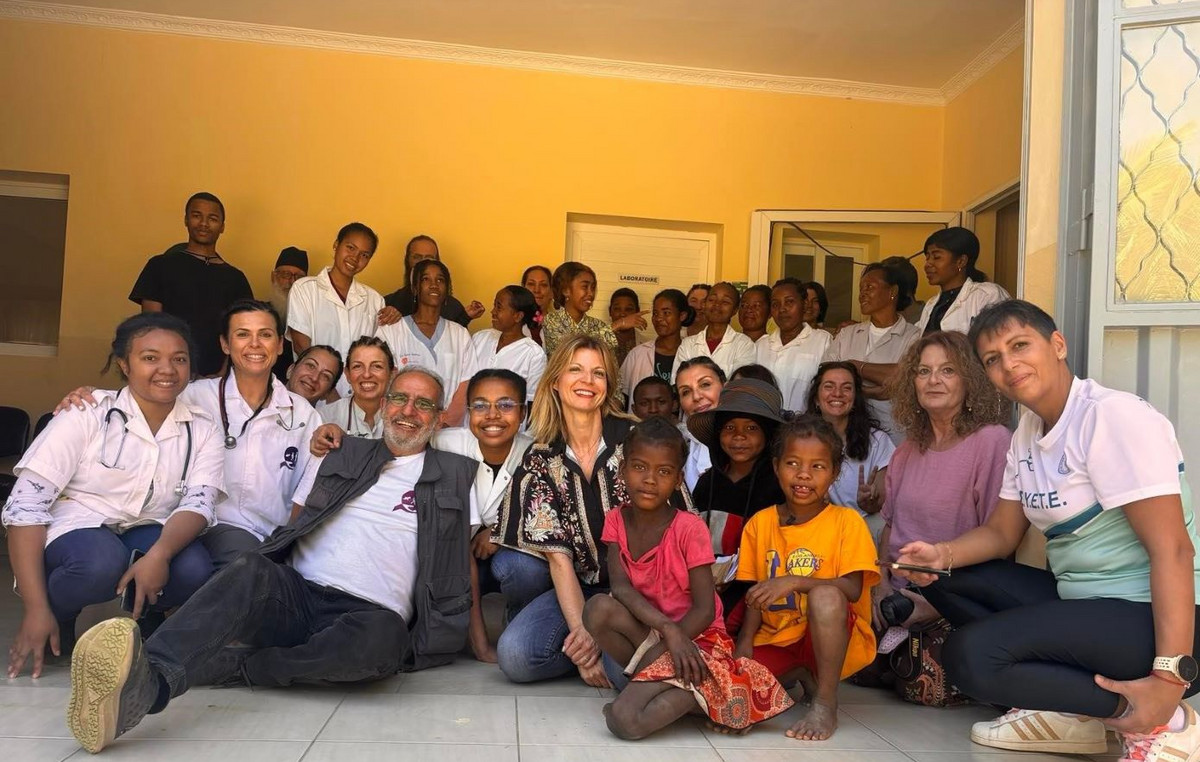A study conducted by scientists from Brazil and Spain tracked the presence of 21 pesticides (including fungicides, insecticides and herbicides) and four toxins produced by fungi of the genus Aspergillus (aflatoxins) in 50 samples of industrialized baby food sold in supermarkets in the state of São Paulo. Paul.
THE study highlights that the dreaded aflatoxins, which are toxic to human and animal organisms, were not found in the selected samples and can arise in cereals, grains and other crops. Aflatoxin B1, for example, is proven to be carcinogenic.
The results were published in scientific journal Food Control. The research was conducted by food engineer Rafaela Prata, with support from the São Paulo State Research Support Foundation (Fapesp).
As for pesticides, the study initially revealed the presence of seven of the 21 compounds screened. “We found pesticide residues in 68% of the baby food samples analyzed. In the breakdown by composition and flavor, 47% of baby foods with fruit had at least one pesticide residue, a rate that was 85% for baby food based on meat and vegetables”, describes the researcher.
The concentrations of the identified pesticides were below the maximum residue limits established by European legislation since 2006, which was used as a standard in the study. In general, in the European Union, the limit is 10 micrograms per kilogram of food for different pesticides. Even lower limits have been set for specific pesticides such as fipronil (4 micrograms per kilogram).
“In Brazil, there is no specific legislation to limit the concentration of pesticide residues in baby foods”, says Rafaela. “What exists are monographs on pesticides on the website of the National Health Surveillance Agency [Anvisa]which we consulted to see in which crops the use of a given product is authorized, as well as the maximum limits on foods, but nothing about baby food”, he adds.
For the researcher, there is a lack of specific regulation for these products. “Infants are a sensitive and vulnerable population group because they eat more food per kilogram of body weight than adults and their detoxification systems and metabolic pathways are not fully developed. It is important to know the composition of the food offered to them”, justifies the researcher.
“Although they are within the limits recommended by European legislation, ideally these substances should not be found in baby food”, says Spanish researcher Roberto Romero-González.
An international reference in the study of contaminants and supervisor of this research project abroad, González is one of the leaders of the Laboratory of Analytical Chemistry and Contaminants of the Research Center for Mediterranean Intensive Agrosystems and Agri-Food Biotechnology (Ciaimbital), at the University of Almeria, Spain , where part of the analysis of Brazilian baby food was carried out, with funding from FAPESP.
lack of studies
The presence of pesticides and toxins produced by fungi in infant foods is still little studied in Brazil, although it is advancing in European countries. “We are one of the biggest consumers of these substances in the world. We need to invest in this type of research”, argues Rafaela. “As far as we know, it was the first analysis done with a methodology developed to identify pesticides from different classes and mycotoxins in meat and plant-based infant foods.”
Part of the investigation was carried out at the Food Analysis Laboratory I of the Faculty of Food Engineering at the State University of Campinas (Unicamp), under the coordination of Professor Helena Godoy, who studies contaminants in baby foods and validates methods with support from FAPESP. Previously, the country only had data on contamination by pesticides in baby food made from fruit.
Soon after this analysis, the group submitted the same samples to a new screening to track the presence of 2,424 contaminants not addressed at first, including other pesticides, hormones, veterinary drugs and their metabolites (substances derived from the metabolization of these chemical compounds by the human body ).
“We found ten more pesticides and one metabolite, demonstrating that the method we developed is sensitive and effective”, says Rafaela. It refers to the innovation process, with the use of new materials, to adapt methodologies used to identify a single compound to the simultaneous detection of a set of pesticide residues and mycotoxins.
“We were able to develop a reliable multi-residue analytical method and fully validate it. It could be a useful tool for food surveillance programs,” he says.
According to the researcher, the aldicarb sulfoxide metabolite was found in three flavors of baby food: bean, rice and meat broth; vegetables and meat; and butternut squash, black beans, and chicken breast. The test did not measure the amount of residue.
Aldicarb is a pesticide banned in Brazil since 2012. Due to its high toxicity, it was illegally used as a rodenticide (the popular “chumbinho”). According to toxicologist Daniel Junqueira Dorta, professor of forensic chemistry at the University of São Paulo (USP), in Ribeirão Preto, it is a pesticide that degrades quickly in the soil, in about two or three weeks. The presence of residues in food suggests, therefore, irregular use in crops. Likewise, the compound quickly degrades in the body and is eliminated.
“The worst effect of aldicarb is acute, due to a higher concentration”, says the toxicologist. “Anyway, there shouldn’t be any residue like that,” he says.
For Professor Helenice de Souza Spinosa, from the Faculty of Veterinary Medicine and Zootechnics at USP, who analyzed the toxicity of the compound in dogs and cats, the finding is relevant and needs to be further investigated and detailed. She also recalls that the Ministry of Agriculture, Livestock and Supply (Mapa), in addition to the companies themselves, regularly monitors the presence of contaminants in food by sampling.
“If you think that the child will eat a small amount and in this study it is not even quantified, that is, it could just be traces, this will not cause acute intoxication. But the finding is important: although prohibited, it could be that they are using it and we don’t know”, says Helenice.
Sought after, the Brazilian Association of Food Industry (Abia) suggested, through its press office, contact with the Brazilian Association of Food Industry for Purposes and Related Products (Abiad). In a note, Abiad stated that the companies associated with it follow all current national rules and legislation and that they have strict policies to guarantee the quality of products to consumers.
“The food goes through several and rigid sanitary surveillance control processes, being approved by the National Health Surveillance Agency, and only then released for public consumption. Abiad also reinforces that none of the associated companies was informed by bodies that regulate the quality of products in Brazil about irregular substances found in baby food”.
Source: CNN Brasil
I am an experienced journalist and writer with a career in the news industry. My focus is on covering Top News stories for World Stock Market, where I provide comprehensive analysis and commentary on markets around the world. I have expertise in writing both long-form articles and shorter pieces that deliver timely, relevant updates to readers.







